You may or may not know Saqhoute, Mirna Nakhla, or Farah Abdelhamid’s jewelry. Over the last few recent years, a growing number of independent designers began to emerge and carve their own space in the local market.
They represent the heart of Egypt’s local fashion and jewelry industry. Unlike the big and global retail brands in America, Italy and France, independent designers form the foundation and the building blocks of Egypt’s future local market, which is gradually trying to become less import-reliant. In 2019, garment exports from Egypt earned $1.598 billion, according to the data released by the Readymade Garments Export Council (RMGEC), making it the second largest sector after agriculture.
Yet, with the recent COVID-19 pandemic and the lack of sufficient funding and support, many of them risk falling behind after years of learning to stand on their feet. The industry is starting to face great shifts, both globally and locally, and many will be forced to adapt or face even more difficulties. Globally, many fashion businesses and retailers have already announced bankruptcy. For instance, in May 2020, renowned designer Diane Von Furstenberg’s British business cited mounting losses and “substantial doubt” in regards to the future of the business, with plans to reconsider its business model.
However, several fashion experts have noted that a more sustainable future can save the industry after this crisis. New values, new ideas, and certainly new approaches to consumption and production have started to become ever more necessary and apparent. While it was evident even before the pandemic that sustainability has become increasingly relevant, with the fashion industry producing globally 10% of the word’s carbon emissions, and is the second-largest consumer of our entire water supply, the COVID-19 pandemic has truly shed light on the need to reconsider the future of the industry.
Voices from Egypt’s local and growing fashion and jewelry shared their stories with Egyptian Streets on how they are coping with the pandemic, why they need support, and future reflections on the industry.
Norhan El-Sakkout, founder of Saqhoute
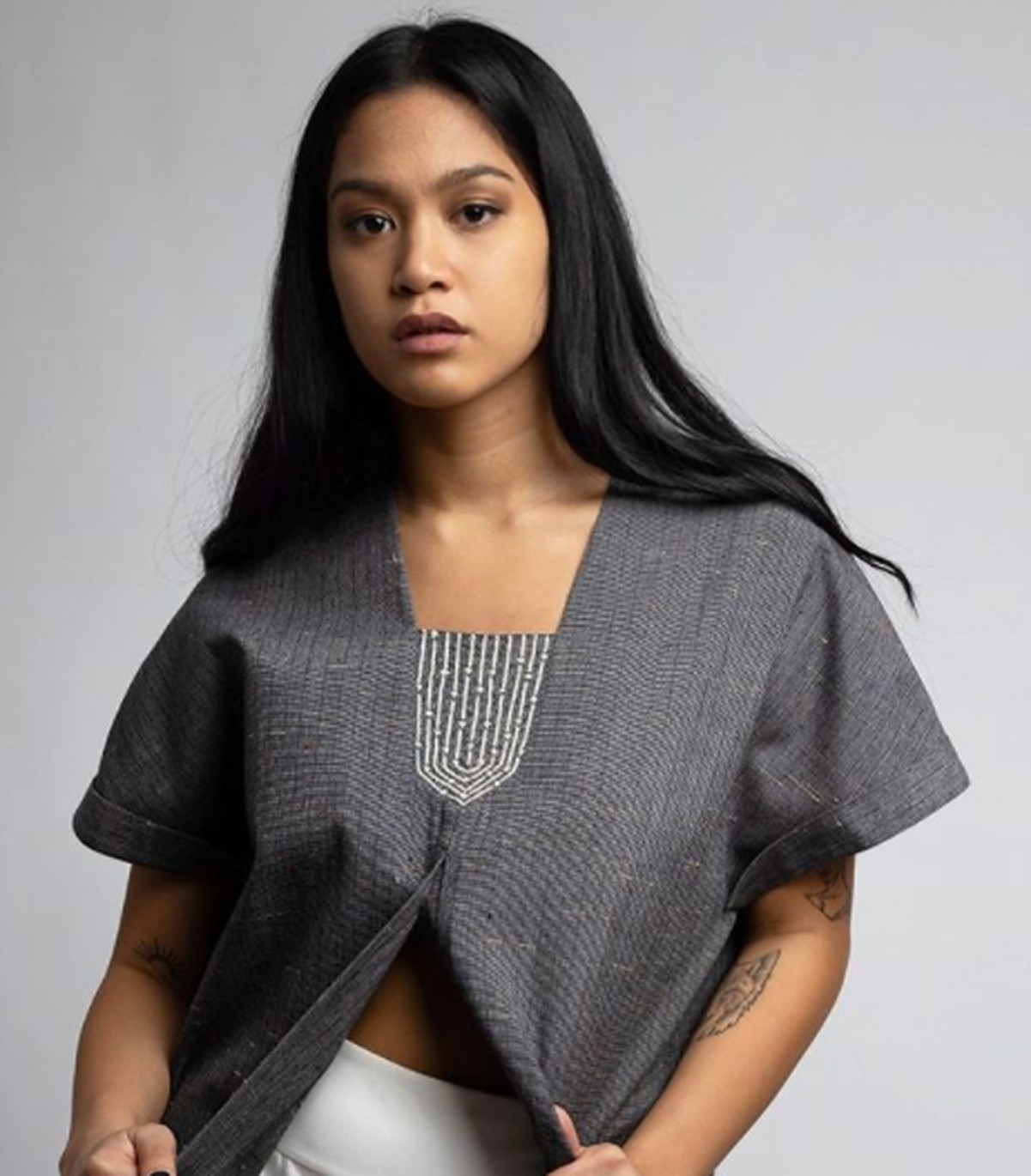
Norhan El-Sakkout is the founder of the local brand ‘Saqhoute‘. After completing her masters in sustainable fashion entrepreneurship at Goldsmiths, University of London, she launched her sustainable and ethical ready-to-wear brand for professional women, offering investment and key pieces that can be worn at any time and in many different ways. As an ethical local brand, it follows a conscious supply chain in the production of clothes, starting from where it sources the fabric, the design concept and how it treats the garments and the humans involved.
“The COVID-19 pandemic delayed production significantly and the launch of the latest collection. I was supposed to launch in March and was delayed 2 months because the pandemic,” El-Sakkout tells Egyptian Streets, “There was a lot of panic and everything shut down, and I was lucky enough that I was already finalizing things because we were already launching in March, so I already had the materials, which we were already bought last year or the beginning of this year.”
The main challenges concern the huge uncertainties on how the rest of the year will look like, as well as the financial plans and pricing strategies for most designers. “We have been checking in on a weekly basis with industry experts or business experts to see whats happening in the climate around us to assess our next decision. It goes like “If things are improving next week, then I can do this,” and then so on, but there are still a lot of uncertainties, and we are unsure if we can launch the next collection,” El-Sakkout explains.
“We feed people too, we have craftswomen and workers to create these pieces, and this is why as a designer I have started to become conscious and mindful of what I will be selling to the customers. I simply cannot launch with the same pricing as before, so I began cutting down costs in marketing and international publications, and sticking to basic marketing: more creative ways to engage with our community,” she adds.
For instance, in her capsule wardrobe challenge, El-Sakkout created more awareness around sustainability and minimal living, and how to build their capsule wardrobes and make it more sustainable.
https://www.instagram.com/p/B-PqPyyhb50/
Being a sustainable fashion brand, however, helped El-Sakkout considerably in coping with the COVID-19 crisis. “It was a direction that the market was moving towards, so what happened was that the crisis shed light on the fragile parts of the industry,” she says, “The industry is very fragile, and all the cracks that existed due to its fast production and excessive consumption – which is not sustainable – revealed that it is not built on strong fundamentals that can withstand a crisis.”
Recently, global brands like Gucci have already announced that they are becoming seasonless, and declared that the fashion week calendar is “obsolete.” This statement is incredibly important, as it is the first for a highly reputable brand to embrace the slower and more sustainable process of fashion.
“Everyone now is moving to sustainability or slowing their pace, and stopping the hassle of the different runaway shows and six collections per year, which is pure excess because no one needs this amount of clothes,” El-Sakkout notes.
In Egypt, local brands have already also started to revisit their strategies and to similarly adopt more sustainable practices. “There are local brands that have been reconsidering what they will be doing and are pivoting to a more sustainable strategy. We have a group of designers on WhatsApp where we discuss this together, and testing different modes of operation and how to slow down,” she says.
“So the audience will definitely start seeing a lot of them turning sustainable and trying to slow down with more timeless pieces.”
However, there is fear that this ‘trend’ could also turn counterintuitive and lead to greenwashing – which is giving the false impression to customers on how a brand is following a more socially conscious and environmentally sound process.
“Slower and sustainable is becoming the new trend, some businesses can claim that they are slow and sustainable, but in reality fashion critics can identify that the supply chain was still too fast because they were still producing in excess,” El-Sakkout says. “They didn’t take the time to build the fundamentals for it, because it usually takes time to figure out the supply, and the items themselves, and when you design things, it has to be something that is beyond seasonal, not just because it is the trend.”
El-Sakkout also hopes that there will be more funding and grant opportunities for local designers at a local level, highlighting that smaller brands are only just trying to cope and some have already halted their businesses for a while with little idea of how to move forward later on.
“Investment and funding opportunities for local designers will affect them drastically. You’ll find some brands have started to hibernate for a while, while others are finding it difficult to pick up with the pace,” she says, “It took us a lot of time to get where we are. This can reset us back quite a bit, and I am hoping that no brands have to completely shut down.”
Mirna Nakhla, founder of Mirna Nakhla
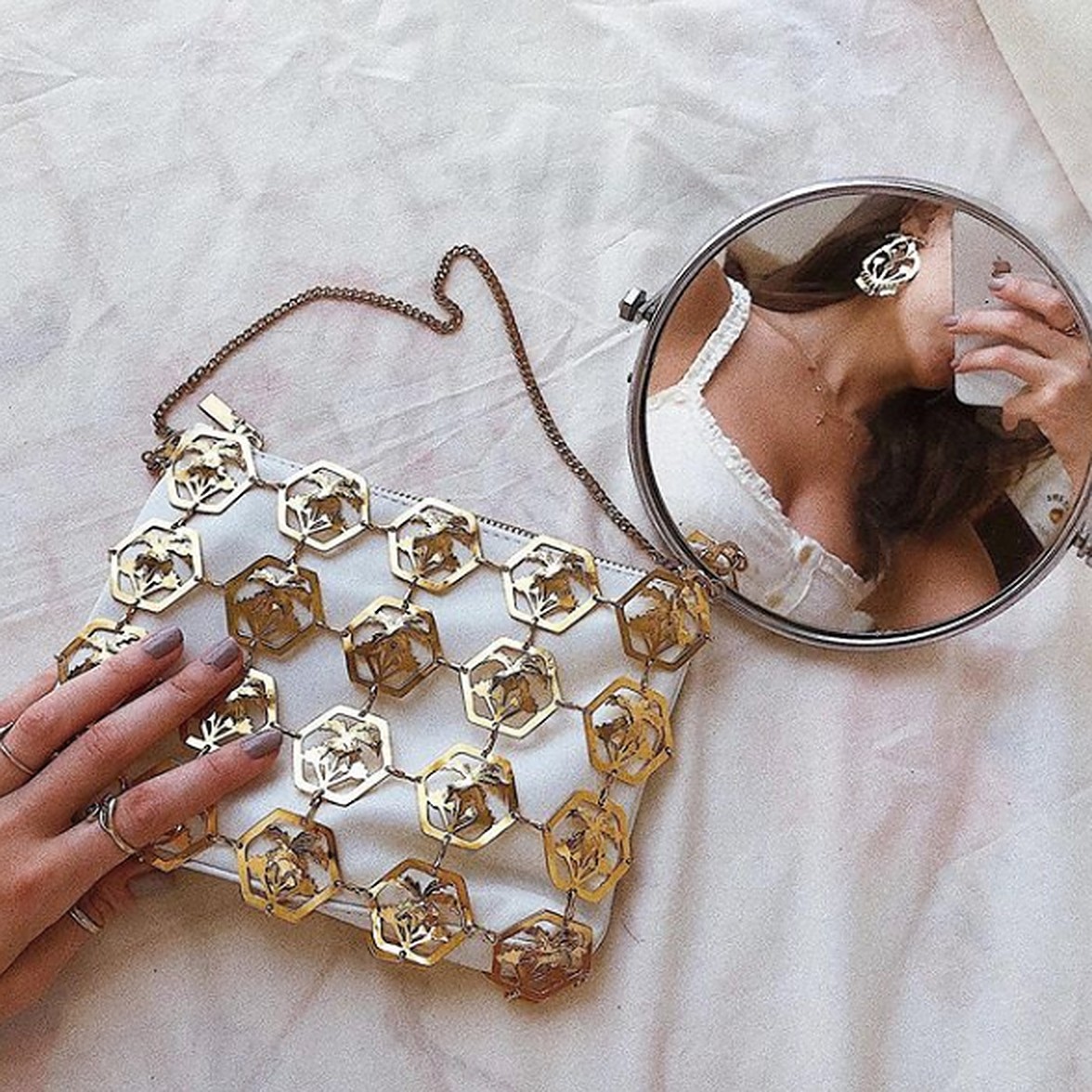
After studying Fashion Design at one of the most prestigious universities in the fashion industry, Istituto-Marangoni, Mirna Nakhla decided to create her own opportunity and launch her own brand. For her, the brand is her way of expressing herself and what she identifies with and is inspired by. Initially, it began inside her grandmother’s house, where she found the art book belonging to her great grandfather and was inspired by the drawing of a lotus flower.
However, after struggling for an entire year to find artisans to produce the design that she created by herself, she decided to embark on her career as an independent designer in the market and gradually meet people along the way.
Launched in 2018 as an independent designer, she has managed her entire collection up till now by herself – from social media to production to design and the delivery board, calling it a “one-woman show” for now.
With the COVID-19 pandemic and sales hitting rock bottom, Nakhla is taking this time to slow down and focus more on smaller outputs, rather than expansion and huge productions. “We are a very small business, so this pandemic has obviously affected us, but I am trying to look at it from a different perspective and see it as a good time to get creative,” she says, “before the quarantine, I was working on the jewelry collection, but then the quarantine happened and I couldn’t plan a proper shoot, so I called a friend of mine and used the analog camera I had, and we decided to simply do the shoot in my garden, not plan a huge big shoot.”
“I am not putting any pressure on the brand, we were given this time to slow down and rethink our priorities. Everything was going too fast, and I am taking this time to just take it day-by-day,” she adds.
Looking at it from the perspective of her clients, she understands that these times are difficult for people to make any purchases. It is not about what she needs, but what her customers need. Instead, social causes and engaging with her customers to raise more awareness on what’s going around the world has become her biggest priority. “I have started to use my platform for social causes, such as the Black Lives Matter movement, so from June 2 to June 7, I stopped sharing anything regarding the brand and only sharing stories of activists and raise people’s awareness on whats happening,” she adds.
https://www.instagram.com/p/CBAaZ2QBPCq/
Locally, designers have also started to collaborate with artists to increase exposure and people’s attention to local brands in the market. “For instance we’re collaborating with Lamia Rady. She had reached out to a lot of local brands for collaborations, which I thought was very fond of her how she is trying to help out and support local brands, because she knows we are all affected by this,” Nakhla notes.
Though it is still unknown as to how far this pandemic will change public perceptions and encourage investment in local products. While international shipping has largely decreased, a majority of local customers are still choosing to buy from fast fashion brands like H&M and Zara online.
“People still would not feel an incentive to invest that much money in a local brand, and would rather invest in a global brand with a better quality, despite the fact that fast fashion brands – which are not sustainable – only copy big fashion houses, but for the general people it is whats known and so this is what they will invest in,” Nakhla says.
“On the other hand, every single piece of mine is handmade by local artisans, they do the brass metal and then the piece is gold plated and then it goes to someone else. But for most people, it’s just a bag,” she adds.
Farah AbdelHamid, founder of Farah AbdelHamid Jewelry
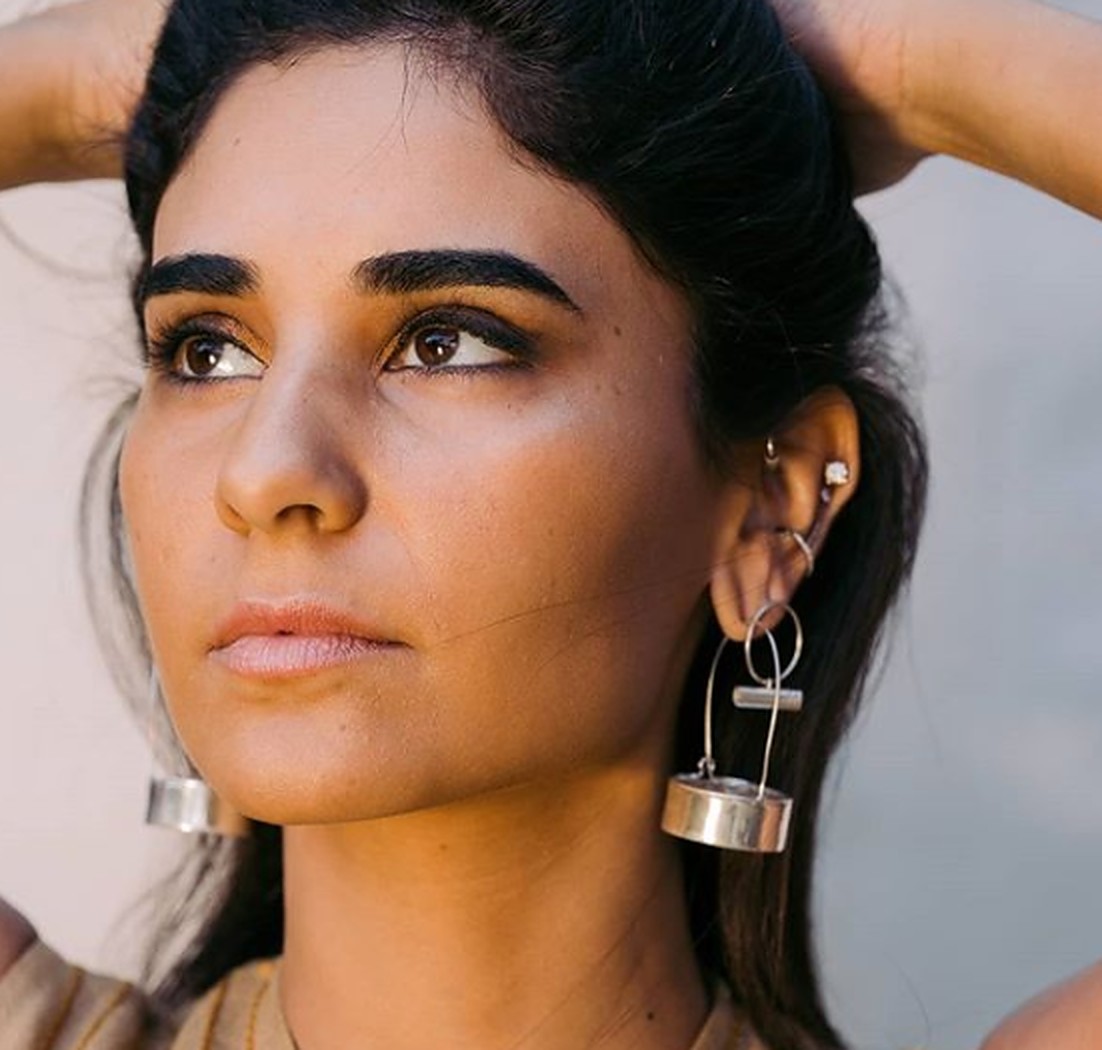
After finishing her Bachelor of Fine Arts in Jewelry at the prestigious Rhode Island School of Design, Farah Abdelhamid was introduced to contemporary design and more hands-on approaches to work, discovering new design aspects and materials that caught her attention in her first jewelry course. She has since then launched her own collection and studio, which aims to elevate thee personal and intimate experience one has with jewelry.
Since the pandemic began, Abdelhamid started the #StayHomeJewelry challenge, which called on her customers to share their own jewelry piece with a personal story.“I am looking for different ways to engage with customers, since consumption radically dropped ever since the lockdown,” Abdel Hamid tells Egyptian Streets, “this initiative aims to create a more personal experience with jewelry, and also encourage creativity through photography.”
Abdel Hamid has also been sharing five minute educational videos on the history of jewelry, touching on modern and ancient ways of wearing jewelry as well as highlighting the different works of artists over time.
Due to the big slump in consumption, AbdelHamid has been struggling to plan out her finances and pay her own rent for her jewelry studio. “It is becoming really challenging to plan ahead financially and pay for rent,” she notes, “sales are now extremely slow, and all my exhibitions and interviews have been cancelled.”
Yet for Abdelhamid, the coronavirus is encouraging more collaboration and multi-brand projects. “It is no longer a one-man’s show, we are all struggling and we must now rely on each other more than ever. It is encouraging collaboration among brands and multi-brand projects,” she says.
https://www.instagram.com/p/CAfdQiIHJjv/
One collaboration is the “#homemadehandmade”, where 9 women designers came together to share their different pieces in one post.
Slowing down and focusing on communicating with her customers in a much more personal and intimate tone, rather than just sharing her jewelry pieces, has also become her new social media strategy. “Gift yourself the chance to slow down and embrace the small things,” she writes in one post, “slow down your breath to fill your lungs and veins with fresh air, slow your brain’s overthinking and be present in the moment, slow down and look around your home for gratitude, memories and things past to give hope to the future.”
Recently, Egypt updated its re-opening measures, implementing a partial lock-down – which has been implemented since March – from 8 PM to 4 AM. Shops and commercial centers are also to remain open until 6 PM rather than 5 PM, though there are expectations that an ease of measures will come along the way and in the next months.
Though as cases continue to increase, many industries, particularly the local fashion and jewelry industry, will be forced to rethink their previous strategies in consumption and production. This shift will most certainly demand more attention, support, and backing from both the public and policy makers in order to not risk losing a generation of skilled, creative and independent designers.
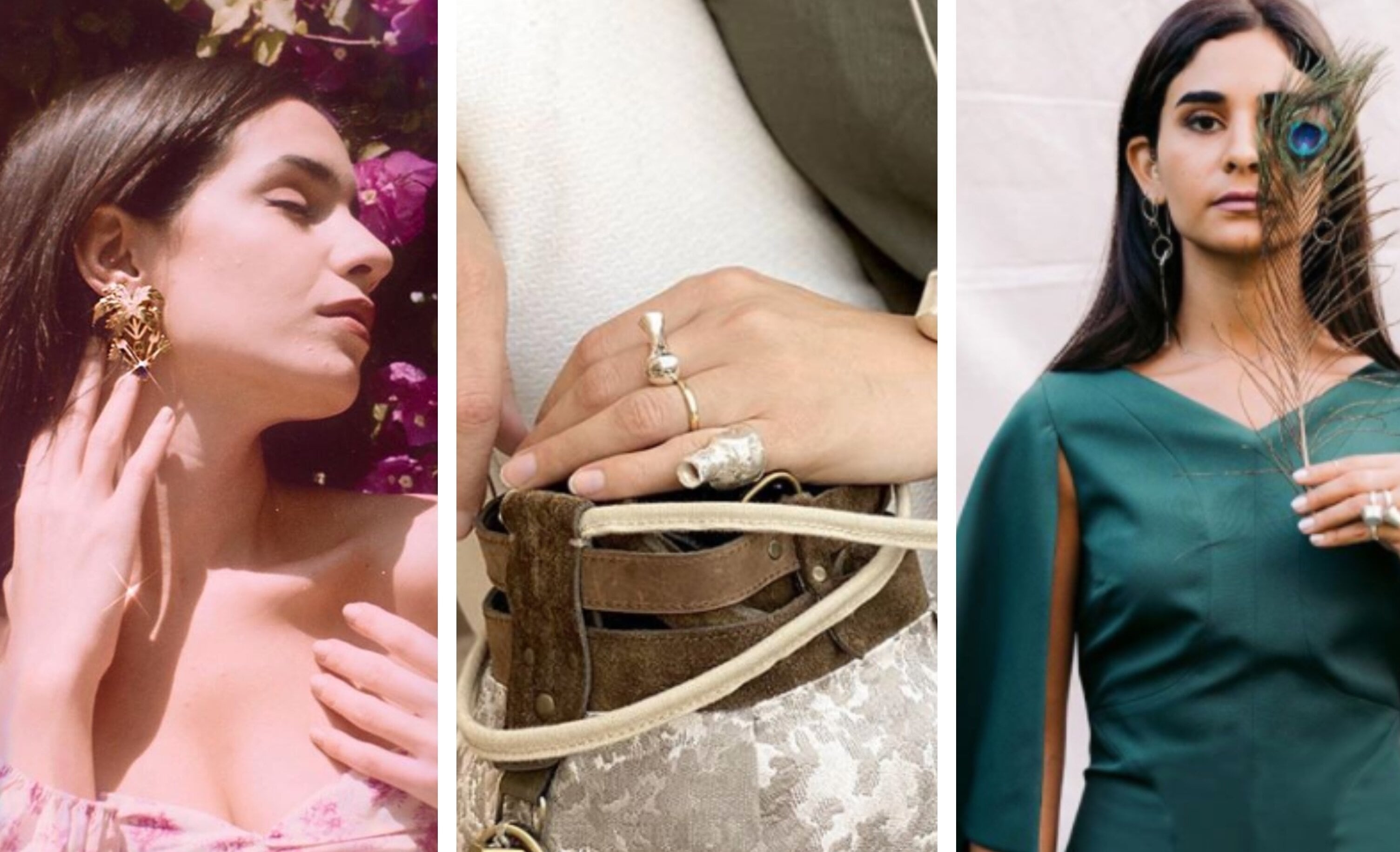





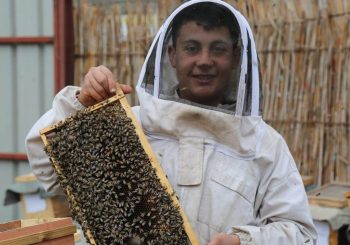
Comments (0)